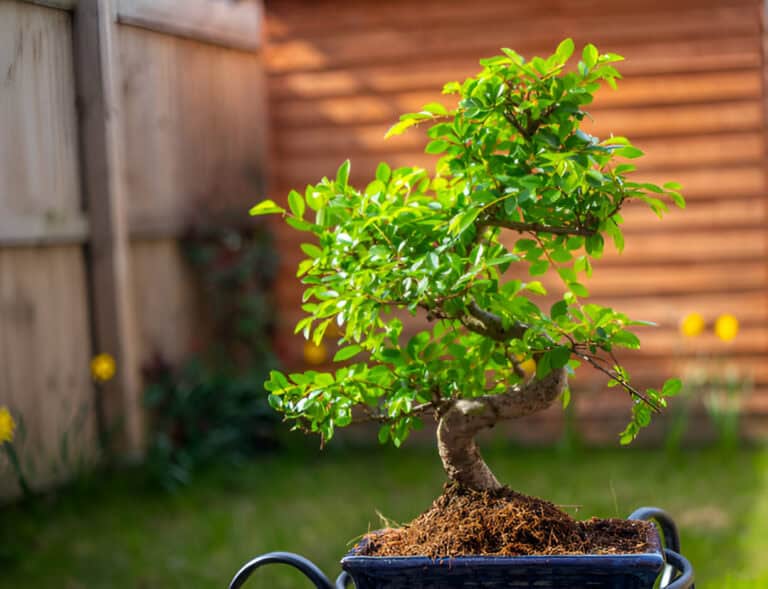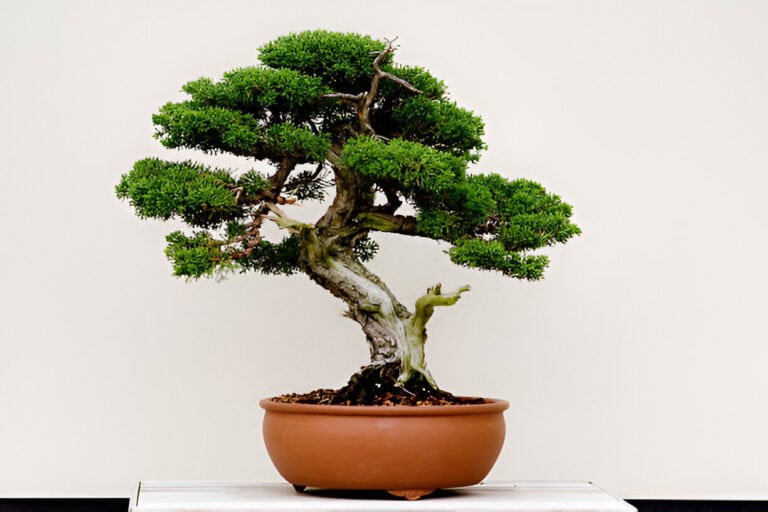How Tall & Big Do Sunflowers Grow? (Plant Height & Weight)

Sunflowers are one of the most popular flowers in the world. They are known for their large size and bright colors. Sunflowers need plenty of space to grow.
There’s nothing quite like seeing a sunflower you planted and cultivated bloom for the first time. Each year I look forward to seeing how tall my sunflowers can get. I am still wondering how tall and big sunflowers can get, and what can you do to grow them to reach great heights?
Continue reading to find out how easy it is to grow remarkably large sunflowers, how tall sunflowers may grow, and how long it takes.
How Tall Do Average Sunflowers Grow?
There are many different varieties of sunflowers with different heights, but standard sunflowers often reach heights of 6 feet.
Colorado State University does a plant growth trial of sunflower hybrid varieties every year to test the oil production capabilities of various sunflower varieties.
In their 2020 sunflower variety trial, 19 varieties of sunflowers were grown and they averaged a height of 5’9″, just under 6′. All of the sunflowers were very close to the average with the tallest sunflower being 6’6″ and the shortest 5’4″.
For the cut flower market, varieties of dwarf and tall sunflowers with beautiful colored flower heads are grown. Edible seeds come mostly from single stalk giant sunflower varieties, I believe.
Sunflowers are commonly grown commercially for three things: the cut flower market, sunflower oil, and edible sunflower seeds.
How Tall Can Sunflowers Grow?
Sunflowers are known for their tall stature and bright yellow flowers. But just how tall can sunflowers grow?
That answer depends on the variety of sunflower. Sunflower varieties are commonly divided into three categories: dwarf, tall, and giant.
Most sunflower varieties fall under the tall category and grow to about 6 feet tall. Dwarf sunflowers grow 1-3′ tall and giant sunflowers grow 10-16′ tall.
Some sunflower varieties can reach heights of 15 feet or more, while others top out at a more modest 3-4 feet. The tallest sunflower on record was grown in the United Kingdom and reached a towering 24 feet tall!
The world’s tallest sunflower from Giant sunflower varieties, which was cultivated in 2014, stood at 30 feet and one inch.
Tallest Sunflower Competitions and Rules
There are tallest sunflower competitions that take place all over the country every summer. Enthusiastic gardeners and hobby farmers get to work trying to grow the tallest sunflowers around.
Below are the rules for one such contest at the Cumberland Ag Expo. This contest also has entries for the largest sunflower head!
“The height of sunflowers will be measured from the crown of the roots to the highest point.” If stalks have been cut, the length will be measured from the cut end.
Sunflowers will be weighed and set out horizontally. If two or more submissions are within 1/2 inch of one another, the prize money will be divided. All varieties and flowering stems are permitted.
To keep them fresh, sunflowers will be put in a pail of water.
The judgments of judges are final. “
Some giant sunflowers have giant sunflower heads that produce lots of seeds!
In the growth trials mentioned above, when sunflowers are being grown for commercial purposes, how tall the sunflowers are is just one of many measures of a healthy plant. It is not the objective.
The objective is to achieve high yields of quality products, as sunflowers for bouquets, sunflower seeds to eat, or sunflower oil. The spacing of sunflowers when growing for different objectives is different.
If you want to get as many edible seeds from a sunflower field as possible, then you want to have sunflowers spaced far enough apart so that they will produce sunflowers and seeds but no more than that.
On the other hand, if you want to grow the tallest sunflower possible, you’ll start by selecting a giant variety known to grow tremendously tall, and you’ll give each plant as much space as possible.
Growers vying for a place in the competition will give each sunflower plant about 16 square feet of space or make sure all other sunflower plants are spaced 4′ apart in every direction.
What’s The Tallest Sunflower Ever Grown?
The tallest sunflower ever grown measured 30 ft. and 1 inch tall. It was grown in 2014 by a German citizen named Hans-Peter Schiffer. Hans is a veteran of tall sunflower growing and had held the record twice before he grew this uber tall sunflower.
Veterans of large vegetable growing contests know all the tricks of the trade to grow freakish vegetables. If you grow a 30 foot tall sunflower, you better give it some support!
The strangest case of this I know of is for the world’s longest carrot. In that case, the grower grew carrots in long pvc tubes meant for plumbing and produced carrots that were something like 20 feet long!
Do Sunflowers Continue To Grow Taller After Flowering?
A sunflower will not grow much taller after it blooms. When a sunflower plant has around 16 leaves and has been growing for approximately 40 days from the time it first sprouted, the plant will begin to develop a flower head at the very top of the plant. About 25 days later, the flower head will bloom, and the sunflower won’t get much taller after that.
How Long Does a Sunflower Take To Grow?
Typically, it takes about two months from sowing a sunflower seed to flower. However, there are a few things that can affect this timeline. For example, the type of soil you’re using and the amount of sunlight your sunflowers get each day can impact their growth.
If you want to speed up the process, there are a few things you can do. First, start with high-quality seeds from a reputable source. Then, plant your seeds in well-drained soil and water them regularly. Lastly, give them plenty of sunlight – at least six hours per day is ideal.
The Tallest Sunflower Varieties

American Giant – These hybrid sunflowers grow up to 14 feet tall with heads that can be a foot wide.
Kong – This giant sunflower can grow up to 17 feet tall and has multiple 10″ flower heads that bloom along the stalk.
Mammoth – Mammoth sunflowers are known to be, well mammoth! Mammoth sunflowers come in several different sizes and several different varieties. A single flower that it produces can grow to be a foot wide.
Sunzilla – These giant sunflowers grow up to 16 feet tall and produce a single large flower head.
Skyscraper – This is a classic giant sunflower that will easily reach a height of 15 feet. Linked is a branching type of sunflower with lots of branches and sunflower heads. There are also single stem Skyscraper sunflowers that produce gigantic single sunflower heads.
Pike’s Peak – This sunflower variety will grow up to 15 feet tall and is known for producing large sunflower seeds!
Mongolian Giant – This giant sunflower will grow to about 14 feet tall and has huge sunflower heads that are over a foot wide!
Heirloom Titan – This heirloom strain grows to 14 feet tall and produces a single large flower head.
Average Sunflowers Weight
Sunflowers are not only beautiful, but also interesting plants. Did you know that the weight of a sunflower can tell you how healthy it is?
A healthy sunflower should weigh between 250 and 350 grams. If it weighs less than this, it may be because it is not getting enough water or nutrients. If it weighs more than this, it may be because the plant is too wet or has been overfed.
| To get an accurate reading of your sunflower’s weight, wait until the plant has been in the ground for at least a month. Then, use a kitchen scale to weigh the entire plant, including the roots. Be sure to write down the weight so you can keep track of your plant’s health over time. |
How To Grow the Tallest Sunflowers
In order to grow the tallest sunflowers, there are a few things you can do. First, you need to choose the right type of sunflower seed. Some varieties of sunflower grow taller than others.
Second, you need to provide plenty of sunlight and water for your sunflowers. They will also need some nutrients in order to reach their full potential.
Finally, you need to give them some space to grow. You don’t want them to be crowded, so they have room to reach for the sky. With a little care and attention, you can grow beautiful, tall sunflowers that will make everyone smile.
Grow the Biggest Sunflowers
To grow the biggest sunflower heads, there are some things you should do. One is to choose the right variety from a giant sunflower variety. Next, you should give the sunflower plenty of space and the ideal growing conditions.
Choose Giant Varieties
Giant sunflowers can grow up to a foot a week and end up taller than 15 ft. tall with sunflower heads bigger than dinner plates. Some of these varieties are branching with multiple flower heads, and others are single stemmed with one large sunflower head on top of them. Growing single stem varieties is the way to go to grow sunflowers for competition.
Some giant sunflowers include Kong, Mammoth, Skyscraper, American Giant, Sunzilla, Pike’s Peak, Mongolian Giant, and Heirloom Titan.
If you choose open-pollinated varieties, you’ll be able to collect seed from the tallest sunflowers you grow each year and re-grow from those seeds the next year until you have some sunflower seeds with really great genetics for growing tall sunflowers.
| Hybrid sunflower varieties will grow very tall, but the seeds you collect from them will not produce sunflowers with the same genetics. |
Give Each Sunflower Plenty of Space
Sunflowers need plenty of space to grow and flourish. To give sunflowers their best chance at becoming as big as they can become, give individual plants plenty of space.
Sunflowers need plenty of space to grow and flourish. They also need room to grow their flowers. If you plant sunflowers too close together, they will not have enough space to grow properly.
When you first plant sunflowers, you should plant them close together and then thin down to your tallest plants, keeping them 4 feet apart.
Provide the Ideal Environment for Maximum Growth
Sunlight is essential for sunflowers to properly grow and strive for the sky, as well as for their roots to have room to flourish. They should be planted in an area where they will get at least six hours of direct sunlight a day.
Part of this is out of our control, and some growing seasons will just have more sunlight and better temperatures than others, resulting in better crops and taller sunflowers.
There are some things, however, that we do have control over.
Water sunflowers properly to ensure that they have the moisture they need at each sunflower stage life to have continuous growth. Create good soil for sunflowers by doing a soil test, boning up on any missing nutrients, adjusting pH, and adding organic material to create an environment where micro-organisms thrive.






